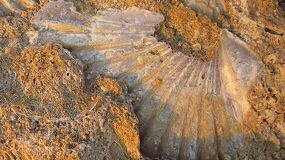Last updated March 6, 2017 at 3:21 pm
Our Director Paul Willis is attending the second Palaeo Down Under conference, touching base with his old palaeontology mates. He will be sharing it on social media and blog around this conference for the next few days. See part 1.
I sit here loaded with nostalgia and melancholy. I’ve just returned from the afternoon sessions of day 2 of Palaeo Down Under 2 and I’ve sat enthralled at the wonderful work the next generation of young palaeontologists presented to me. So much of it continuations of work that I was doing way back in the last millennium when I was doing research, specimens that I had worked on viewed in a new light, new specimens that shed new light onto dark questions I was asking all that long ago, new technologies applied to old problems.

The session I attended was devoted to dinosaurs and other animals that lived alongside them here in Australia. We heard how the feet of the massive dinosaur Rhoetosaurus have been restudied and that old ideas comparing them to the feet of elephants simply are not good enough. We heard about opalised fossils including creatures that lived on the carcasses of marine reptiles such as ‘Eric’ (now known as Umoonasaurus), a precious specimen that I cleaned and prepared for display back when I was a post-graduate student. From way up in central Queensland, where I spent months walking the grounds looking for fossils, came reports of small fish and prawns trapped inside oysters the size of dinner plates. An analysis of the sediments around fossils of the crocodile Isisfordia reveal details of the environment that beast lived and died in. And a couple of different investigations of dinosaur footprints from Western Australia and Queensland reveal a whole suite of dinosaurs known only from the ghostly impressions left by their feet.
I used to be out there doing this sort of work but science in general and palaeontology in particular is very much a successional occupation. It works best when each new wave of bright young researchers are given the opportunity to take the science forward, to ask questions that never occurred to us when we were in the field, to make discoveries that eluded us and to build on the discoveries that we made.
It was a very wholesome session.
Did you like this blog? Follow us on Facebook, Twitter and Instagram to get all the latest science.





















